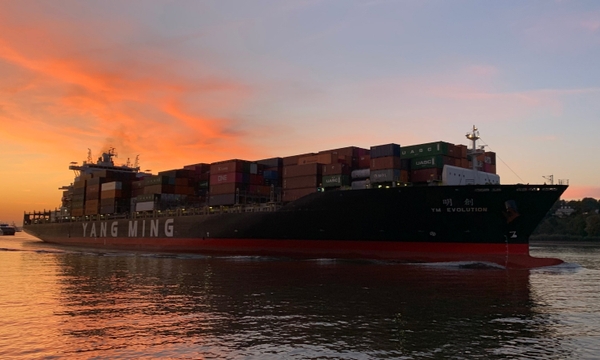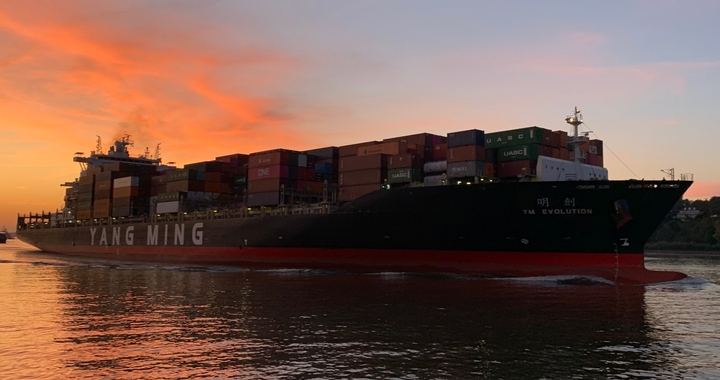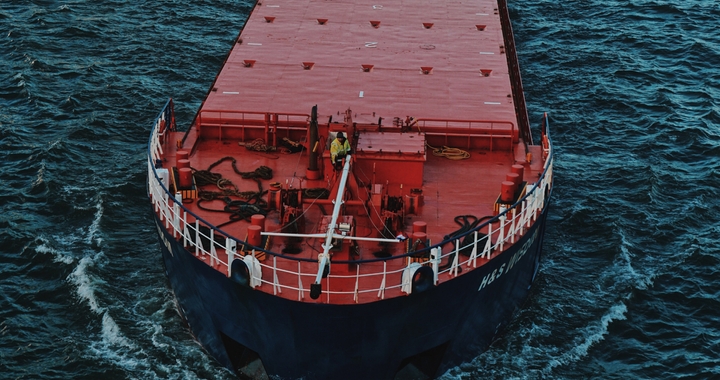Out of Gauge Cargo


Certain types of cargo require special consideration when it comes to shipping. So what does out-of-gauge cargo mean? And how does it affect shipping?
On a cold, overcast April day in 1956, a World War II-era converted oil tanker sat at the port in Newark, New Jersey. Through the intermittent rain, a crane lowered fifty-eight aluminum containers onto its aging hull, alongside fifteen thousand tons of bulk petroleum. At the time, the shipping industry could not have foreseen the significance of the journey. But five days later, the SS Ideal-X pulled into Port Houston, Texas, making history as the first commercial container ship.
Storage containers changed the game: lowering costs, cutting time, and easing logistics. Today, around 90 percent of the world’s trade travels by ocean, according to the Maritime Industry Foundation.
Shipping cost $5.80 per ton in 1956, mostly due to the manual labor required to load cargo piece by piece. This new method—the shipment of cargo in standard containers—suddenly dropped shipping costs to just fifteen cents per ton. Furthermore, a vessel that previously had to moor for a week now could load containers in eight hours.
Today’s ships can carry more than twenty thousand containers. The proliferation of containerized shipping lies at the core of interconnecting a global economy, making international transport cheaper, and integrating the supply chain worldwide. For decades, the container has served as the basis by which modern shippers set the ocean freight rate and measure overall volume.
Even so, certain freight does not ship easily. Standard containers can’t hold goods that are too heavy, too large, too bulky, or too oddly shaped. This kind of oversized cargo poses challenges for the shipper, the carrier, and everyone throughout the supply chain. What is the best way to handle this out-of-gauge cargo?
Definition of out-of-gauge cargo
Out-of-gauge cargo (OOG cargo) does not fit inside a general-purpose container. Perhaps it is too large, such as part of an aircraft. Perhaps it is abnormally shaped, such as a crane. Or perhaps it is extremely heavy, such as a machine used in the generation of electricity.
Container ships generally feature boxlike containers packed tightly together, side by side, and stacked without any gaps. Each container has an assigned slot on the ship. But OOG cargo takes up extra room. Other loads can pack neither close by its side nor on top.
Why does out-of-gauge cargo cost more
Cargo that exceeds the size of a standard slot incurs a surcharge for so-called “lost slots.” In other words, the shipping line “loses” a slot that it could have used for other cargo. Even a shipment that exceeds the standard height by a few inches will be out of gauge.
Say, for example, a crane has to ride in an open-top container because it is too tall for a standard container. The extra height prevents anything else from stacking on top. Similarly, if an item such as a trailer is too wide, the shipper may charge for three spaces: the space it actually occupies and the two lost slots on either side. Because oversized cargo does not have a standard size, every shipment has a different cost.
How to determine if a shipment is out-of-gauge
In 1968, the International Organization for Standardization established a uniform measurement of a vessel’s capacity. The twenty-foot container became the reference point for shipping volume. The “twenty-foot equivalent unit,” or TEU, expresses both how much a vessel can hold and how much activity runs through a port. For instance, the largest modern container ships carry more than twenty thousand TEU. And the Port of Shanghai, the largest in the world, handles more than 40 million TEU every year.
OOG cargo is a loose classification for commodities that cannot fit in a regular six-sided shipping box. Standard shipping containers come in twenty-foot or forty-foot models.
The twenty- or forty-foot designation refers to the container’s length. Exceeding eight feet of width or a height of eight feet, six inches also marks cargo as out of gauge, regardless of the length of the cargo container.
Considerations when shipping out-of-gauge cargo

Some companies may choose to outsource the management of the logistics involved with shipping out-of-gauge cargo. Third-party logistics (3PL) companies handle all of a company’s logistics throughout the supply chain. These logistics include not only transportation but also distribution, warehousing, and fulfillment.
Freight forwarding
Freight forwarding has a narrower focus than 3PL.
A freight forwarder facilitates the movement of cargo. Because of their expertise, freight forwarders can recommend the most efficient and economical transport methods. A freight forwarder contracts with shippers and often can negotiate prices.
Freight forwarding companies also facilitate all aspects of the transport of commodities between countries. These include methods of transport—ocean, air, or road—as well as import and export regulations. In effect, the freight forwarder is an intermediary between origin and destination.
Sometimes a company may offer freight forwarding and 3PL under the same umbrella. Shipa Freight, for example, is one of the world’s largest freight forwarders. As a 3PL provider, Shipa Freight also offers integrated supply chain services, including warehousing and distribution.
Shipping arrangements for out-of-gauge cargo
Booking passage for OOG cargo requires the following information:
- Exact size. Dimensions and weight determine the cost and availability of slots.
- Pickup arrangements. Transporting OOG cargo to the port also must comply with local regulations.
- Loading equipment. OOG cargo generally requires cranes, ramps, or other ancillary equipment for proper loading.
- Permits and other documentation. Regulations vary by country, state, and sometimes even city.
- Type of container. Overheight cargo requires an open-top or flat rack. If the cargo width exceeds eight feet, six inches, or if it must load from the side, a flat rack is necessary.
In the United States, the National Cargo Bureau inspects cargo on flat racks before it leaves port. The inspection reviews weight distribution and the manner of securing the sea freight. Failure to meet specifications will cause delays and possible fines.
Out-of-gauge containers
| Type of container | *Description | Loading | Commodity | Special considerations |
|---|---|---|---|---|
| Open top | No roof | Crane | Tall or long cargo, such as lumber | Protected with a tarp covering |
| Flat rack container | No roof, no long side walls | Flexible options; can load from the side with forklift | Wide cargo, such as large machinery or very large reels | Able to transport in-gauge cargo as well |
| Flatbed | Floorboards only, similar to reinforced pallet | Special forklift or crane | Very heavy or long cargo, oddly shaped machinery and vehicles, such as boats | Fortified with floorboards for up to eighty-eight thousand pounds |
Other special cargo
Roll-on roll-off: The most common method for shipping vehicles, the cargo literally drives onto a vessel equipped with a ramp.
Lift-on lift-off: Cranes lift and lower the cargo onto the deck of the vessel. Some oversized goods do not fit through the opening that leads below the deck.
Reefer container: Short for “refrigerated container,” these temperature-regulated boxes ship perishable substances, such as fruits and vegetables or pharmaceuticals. Because reefers generally come in the standard twenty-foot or forty-foot sizes, they technically are not out of gauge. However, shipping temperature-sensitive materials require power for the refrigeration unit, so a reefer container requires the use of the vessel’s generator.
Fluctuating rates
Unlike a standard shipping container, out-of-gauge cargo by definition does not stack. Each shipment carries its own unique variables when determining cost.
Costs of shipping out-of-gauge cargo

Before containers revolutionized shipping, the industry relied primarily on the labor of stevedores to load individual pieces of cargo manually. Even in the 1950s, shippers recognized the inefficiency of this “breakbulk” model. Standardizing sea freight reduced the overall cost of shipping: loading and unloading, storing, and transport.
Today’s shippers rely on container shipping. TEU containers stack together neatly, maximizing the amount of cargo a ship can carry. If cargo doesn’t fit, prices rise precipitously.
Factors that affect the cost
For instance, machinery valued at $500,000 costs about $500 total to ship in containers from Los Angeles to Shanghai. Classifying the same shipment as breakbulk cargo roughly triples the price to about $1,500.
Shipping from New York yields the same pattern. The same machinery shipment in containers from New York to Shanghai costs around $1,700 total. As breakbulk cargo, the shipping cost rises to around $5,500.
Furthermore, shippers often require specialists to supervise the loading, handling, and off-loading of out-of-gauge cargo. This adds to the cost.
Breakbulk shipping
A shipper may benefit from disassembling oversized cargo and shipping it in standard containers, rather than shipping it whole. Of course, reassembling the product at the destination will involve extra time and cost. Thus the shipper must find a balance between the options.
Companies that make generators and turbines often ship breakbulk cargo, preferring to have an item arrive in one piece. Large cut timber, pipes, or rolls of steel also often travel breakbulk, since they may exceed the size of even the largest specialty containers. Large vehicles, such as yachts or train cars, also ship as breakbulk cargo.
Shipping solutions for out-of-gauge cargo

Sea transport is the most economical and environmentally sound method of shipping out-of-gauge cargo. However, shippers do send OOG cargo by air, rail, and road as well. The method of transportation depends primarily on the origin and destination of the cargo, time for the shipment to arrive, and cost.
The capacity of all container ships globally equals around 25 million TEU and almost 300 million tons of cargo. That includes containerized cargo as well as out-of-gauge shipments.
Methods to transport out-of-gauge cargo
At the largest US port on the East Coast, the Port of New York and New Jersey, more than 7.4 million TEU passed through in 2019. In addition, the port handled nearly 600,000 vehicles and 140,000 tons of breakbulk cargo, according to the 2020 New York Shipping Association Economic Impact Study.
Motor vehicles were the number-one commodity coming into the United States in 2016. The top trading partner, Japan, sent $25.4 billion worth of cars to the United States, according to the United Nations 2016 Conference on Trade and Development.
Shipping a car by air costs nearly three times as much). Even considering that factor, Japanese exporters spent nearly 70 percent of their transportation dollars on shipping by sea. Likewise, even though Mexico—the fifth-largest automobile trading partner with the United States—shares a landmass, shippers still chose to spend more on transportation by sea vessel than by rail.
Transportation cost of automobile imports (USD)
Method of transport|Japan|Mexico| ------- | ---------------- | ---------------- |----------: Sea|1,061,695,151 (71 percent)|135,797,879 (46 percent) Air|437,512,875|32,046,262 Rail|n/a|128,421,405
Best OOG shipping solutions
Shipping OOG cargo correctly prevents damage to the shipment, to other cargo, and to personnel handling the goods. Rough seas can dislodge cargo that a shipper has improperly secured. Rain and ocean spray can damage the contents of open containers. Heavy-duty tarpaulin covers, along with lashing rings or bars, tie-down straps, clamp locks, and pad eyes help cover exposed materials and secure them to the ship deck.
Navigating OOG cargo
Navigating the logistics throughout the supply chain can be complicated. Containerized shipping has simplified many of the issues, but the unique challenges of OOG cargo require targeted answers to the question of what does out-of-gauge cargo means?
A recent Infosys survey of four hundred logistics professionals found 3PL providers are helping to provide those answers. It’s not simply a transactional relationship. The survey found shippers are increasingly treating their 3PL service as a partner, using data analytics and other measures to work together to anticipate and address problems.
The survey indicated that 88 percent of shippers say the use of 3PL has improved service to customers. In addition, 68 percent of shippers said that using 3PL services has contributed to reducing logistics costs. This partnership is particularly critical in shipping out-of-gauge cargo, for which costly mistakes echo throughout the supply chain, causing delays and unanticipated overruns.
Contact Shipa Freight for more information on out-of-gauge cargo shipping solutions, including online logistics management and track-and-trace capabilities.
Why Ship With Shipa Freight?

Shipa Freight can assist you in making your shipment easy and hassle-free. We have access to the best freight forwarding platforms that can greatly benefit your shipping experience.
Shipa Freight has expert staff and the latest logistics technology to help you with your shipment needs. With our expertise, we can guarantee seamless and hassle-free shipping for you. We also provide you with assistance for customs clearance so that you can get your cargo faster and without complications.
If you need to ship cargo, choose Shipa Freight for easy and stress-free shipping.


